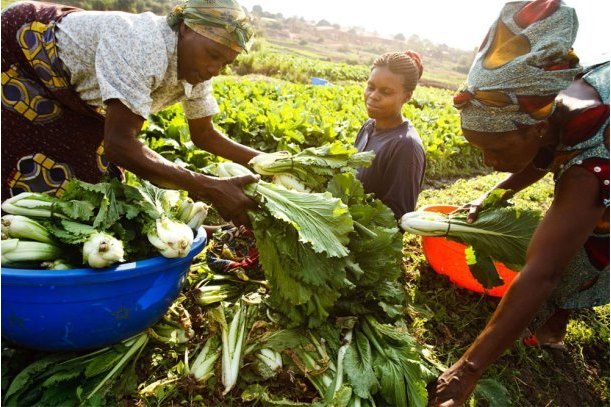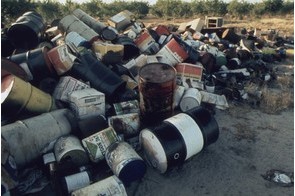African Union's bold agenda for agriculture transformation

Summary
Renewed commitment to agriculture development is part of the AU's 2063 agenda, which aims to reverse decades of African underdevelopment by putting forward a dynamic vision for the future.
Introduction
The African Union’s new agenda for African agriculture is an ambitious attempt to transform the sector as a platform for accelerating regional development. A new agenda for agriculture is definitely needed, more than a decade after the 2003 Maputo Declaration on Agriculture and Food Security in Africa was established. The Maputo Declaration called for the allocation of 10 percent of national budgets to agriculture development, among other decisions.
The Comprehensive Africa Agriculture Development Programme (CAADP), also established in 2003, has not led to a substantial turnaround in the prospects of smallholder farmers. Many continue to be challenged by low productivity, poor access to markets and inadequate extension service provision. The CAADP framework led a number of African governments to formulate specific country action plans to revitalise their agriculture sector but few were fully implemented due to lack of funding. This situation has been worsened by poor road infrastructure which has raised transport costs for farmers trying to get their goods to markets.
In response to criticism over the CAADP’s disappointing delivery, the AU has acted swiftly by bringing together African member-states to renew their commitment to agriculture modernisation. In 2014, the AU celebrated the Year of Agriculture and Food Security and received backing from African leaders for a fresh approach in the form of the Malabo Declaration on Accelerated African Agricultural Growth and Transformation for Shared Prosperity and Improved Livelihoods. The Malabo Declaration calls for the elimination of hunger and malnutrition, the reduction of import dependence and the establishment of a strong regional market for agro-food products based on agro-commercialisation. Particular emphasis is placed on building opportunities for value addition. This could prove critical in ensuring significant income generation for smallholders and rural labourers unable to escape poverty.
Early assessments of the AU’s agenda highlight a noticeable urgency toward agriculture reform, missing in previous years. Whether the AU can learn from past mistakes remains unclear as implementation challenges continue to pose considerable concerns.
Status of Africa’s agricultural performance
Compared to other developing regions, Africa’s agriculture growth has been relatively modest. In Asia, increases in agriculture production are based on improvements in the use of inputs. Unfortunately, fertiliser levels in Africa are among some of the lowest in the world. Only a minority of smallholder farmers are able to apply fertiliser in their production. As a consequence, African farmers have low rates of productivity, undermining efforts to make the sector globally competitive.
On average, cereal yield in Africa reaches only half of the yields in Asia. And despite a number of initiatives to tackle Africa’s productivity gap, the region has been unable to significantly increase crop production leading to chronic food deficits. Food imports which were largely non-existent in the 1960 have become the norm, with Africa becoming a net importer of cereals, while accumulating a food import bill of $20 billion per year. The value of African agriculture export has declined by half, compared to the mid-1990s.
African agriculture has largely remained at a subsistence level, comprising of about 33 million smallholder farms with average plots of less than two hectares. Around 80% of farms in the region are classified as small-scale as the development of commercial agriculture has failed to materialise.
Although moderate progress has been achieved in the proportion of people suffering from malnutrition, Africa remains the only region in the world where the absolute number of the hungry has increased in the last 30 years. Protracted food crises in areas such as the Democratic Republic of Congo have pushed up rates of malnutrition in the country, just as recent conflicts in Central African Republic have affected food security. Dependence on food aid in Eastern Africa, notably Somalia and Ethiopia, have also worsened the food security situation despite marked achievements in hunger reduction particularly in Southern and parts of West Africa.
AU’s agenda for agriculture transformation
Renewed commitment to agriculture development is part of the AU’s 2063 agenda, which aims to reverse decades of African underdevelopment by putting forward a dynamic vision for the future. Seven strategic priorities have been selected for policy intervention ranging from inclusive growth and sustainable development, good governance and the renewed role of Africa in the global economy.
Tumusiime Rhoda Peace, Commissioner for Rural Economic and Agriculture at the African Union Commission, commended the work achieved under CAADP for having “redefined and reshaped the critical path to the attainment of Africa’s agricultural transformation objectives.” While the 2014 Malabo Declaration sets the foundation for agro-commercialisation through inclusive agribusiness and private sector engagement, inclusive public private partnerships are central to agriculture value chain development in the region. The AU will play a facilitating role in promoting private sector engagement while maintaining core linkages with smallholder agriculture.
The AU’s agenda is informed by demand for a modernized agriculture system for Africa; it has a clear objective to increase productivity and value addition and also reverse decades of food insecurity. Specific targets include the elimination of hunger and malnutrition, the reduction of food imports and a rise in intra-Africa trade to 50% of total trade in agro-food products. It also calls for the introduction of modern agriculture technology; it is also promoting a minimum of 30% of agriculture financing to be accessed by women.
Notably, there is a renewed focus on employment and income generation for the poorest rural communities in recognition of previous failures to make serious impacts on rural poverty reduction. Youth unemployment is also targeted for specific intervention with a commitment to guarantee enhanced access to education, training and technology.
Financing constraints and implementation bottlenecks
Considering the scale of challenges facing African agriculture, the ambitious nature of agreed AU targets does reflect the need for urgency and the importance of setting the bar high in order to deliver much-needed and overdue reforms. Moreover, there is reasonable concern over the number of unfunded commitments and the poor record of African member-states in mobilizing the necessary public resources. Despite initial claims of AU’s CAAPD agriculture framework being led by Africans for Africans, the absence of domestic leadership has been palpable, leading to dependence on international donors to meet the financing gap.
Similarly, contrary to efforts by the AU to mobilize significant public resources for agriculture, African governments have failed to meet the famous 10% target of national budget allocation to the agriculture sector. Figures show that out of 54 countries, only 9 have reached or passed 10% reflecting low political will for reform. In fact, fewer than 20% of AU member-states are currently meeting the 10% target. Although the 2008 food crisis was a watershed moment for generating attention towards agriculture development in Africa, the expected massive aid flows into the sector never happened, instead, donor funding to agriculture rose only marginally. Currently, agriculture Official Development Assistance (ODA) is below 5% in 29 African countries, with donors continuing to prefer short-term food emergencies to long-term agriculture development programmes.
Much criticism has been levelled at the AU for failing to push forward implementation at country level with a clear road map to ensure effective programme delivery. Accusations of institutional failure has highlighted the often high-level top-down style of the initial CAADP approach which led to isolation in some countries. Governments with critical capacity constrains were not offered adequate technical assistance while the research and development gaps often holding back reforms to Africa’s ailing agriculture extension services were not fully addressed.
The AU’s agenda for agriculture transformation must seriously look into the root causes of CAADP’s programme delivery gaps at country level or face the prospect of having little to show on the ground even if financing prospects improve.
Galvanizing opportunities for reform
Moving ahead towards the next generation of smallholders, the African Union has put forward an impressive vision for the future of African agriculture. The drive to eradicate hunger and end food-import dependence are bold calls requiring exemplary leadership, direction and most importantly, abundant financial resources. Learning from the mistakes of the past will be critical, particularly in meeting implementation gaps and reversing decades of chronic underinvestment.
Emphasis on the role of the private sector reflects its recognition as the force behind agro-commercialisation. Whether private investment can fill the funding gap left behind by the absence of public financing remains to be seen. Essentially, the remarkable growth in Africa’s food market may be the huge incentive needed to promote further interest by private actors. The African food market is expected to be worth $1trillon by 2030 – three times its current size. Moreover, increased private investment is likely to be triggered by the market demand of Africa’s burgeoning middle class, especially as a result of the shift to a more diversified food basket.
The role of development actors such as the African Union will be in negotiating collaborations between public and private sectors as a strategy for agriculture development reform. If the right balance is struck between the achievement of sustainable agriculture development and the mobilisation of public-private partnerships, the AU’s agenda could be the best opportunity for African agricultural transformation for a generation.
Joan Nimarkoh, Financial Nigeria guest writer, works as a Policy Consultant for the UN FAO. She is a graduate of International Development Studies (MSc) from the school of Oriental and African Studies, University of London, while specialising in African Studies.
Related
-
Confab reviews Nigerian agriculture policy
The aim of the Abuja meeting is to develop a new policy to revamp the agriculture sector in Nigeria.
-
How to ensure sustainable management of agricultural wastes
Indiscriminate burning of agricultural land is a major contributor to air pollution which kills up to 6.35 million adults ...
-
Optimising wet period for dry season farming
Plans for 2024-2025 dry season farming should by now be underway by concerned ministries, including the ministry for ...










